
Am Fam Physician. 2004;69(3):572-574
What is CPAP?
In some people, the tongue and the uvula at the back of the throat block airflow to the lungs during sleep. This is called obstructive sleep apnea (see Picture 1).
Continuous positive airway pressure (CPAP) is the most common treatment for sleep apnea (say: ap-nee-uh). A CPAP machine has a mask, tubes, and a fan. It uses air pressure to push the tongue forward. This opens the throat to air, and reduces snoring and apnea (see Picture 2).
You should put your CPAP mask on whenever you sleep or take a nap. CPAP does not cure sleep apnea. But, when you use CPAP correctly, your sleep problems will get much better.
How do I know I need CPAP?
Your doctor may ask you to get a sleep study. During your sleep study, you will try different levels of air pressure to see which one helps your sleep apnea. In general, heavier people and people with severe apnea need higher air pressures.
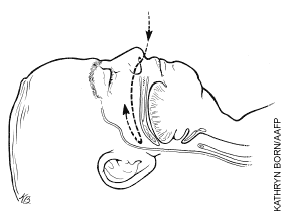
What if I have problems with CPAP?
Many people have small problems with CPAP, especially at first. Don't give up, even if you have some problems. Look for a support group in your area, so that you can talk with other people who also have sleep apnea.
Here are some common problems you may have with CPAP, along with some possible solutions:
The mask feels uncomfortable. Because everyone's face has a different shape, you may need to try different masks to find one that fits you well.
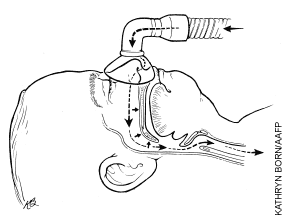
Your nose feels dry and stuffy. You can try adding a humidifier to moisten the air from the CPAP machine. Some people prefer moist heated air.
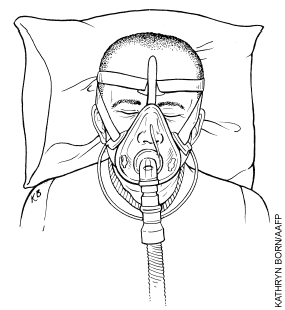
Your nose feels blocked up. Some people with sleep apnea also have nose problems. Ask your doctor if you have a nose problem that can be treated with a nose spray. Surgery also is an option. Some people who breathe through their mouths don't do as well with CPAP nose masks. A full-face mask that covers both the nose and the mouth may help these people (see Picture 3).
The mask bothers your skin and nose. Because the mask must fit firmly over your nose and cheeks, it may irritate your skin. A different size or kind of mask may help. Some people benefit from using nasal pillows that fit into the nostrils and relieve pressure on the bridge of the nose (see Picture 4). Using a regular CPAP mask one night and nasal pillows on the next night may help you feel more comfortable.
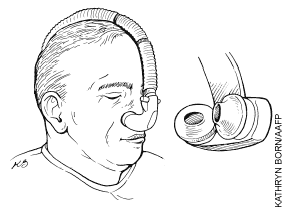
The mask leaks air. Some people can't keep their jaw closed while wearing the mask. A chin strap can help hold up your jaw and keep the air in (see Picture 5).
You don't like the pressure. You may find that breathing out against the air pressure keeps you from sleeping deeply. Your doctor may ask you to use a bilevel machine that lowers the air pressure when you breathe out. The same mask may be used with CPAP and bi-level machines.
You take the mask off during your sleep or don't wear it every night. Most people can't wear the mask all night long, every night, right from the start. Keep trying, even if you can only use the mask for an hour a night at first. Once you solve your comfort problems, you will be able to increase the time you wear the mask. Always try to wear the mask in the early morning hours, when sleep apnea is usually the worst.
You just can't get used to the mask. Some people find that wearing a dental device that pushes their tongue forward helps. Or talk with your doctor about having throat or jaw surgery.
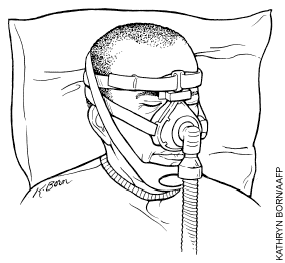
Where can I get more information about CPAP?
For more information, contact the following organization:
Sleep Apnea Specialty Centers of Michigan
Web site: sleepapneacenter.com